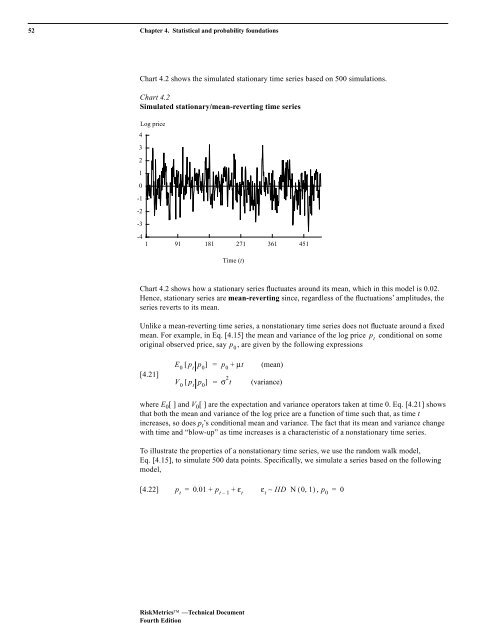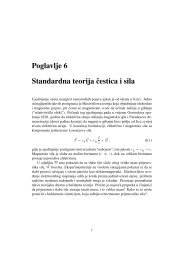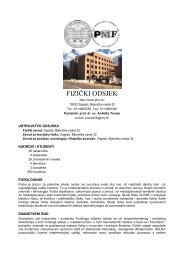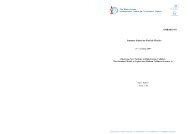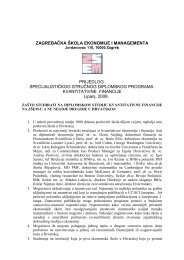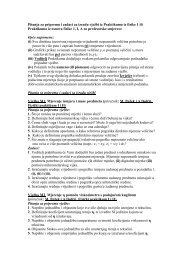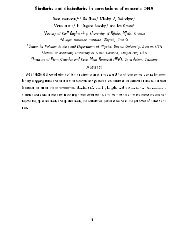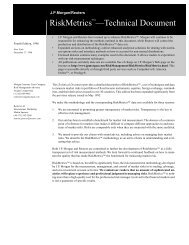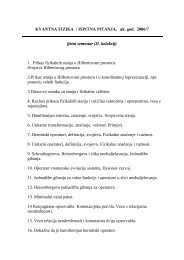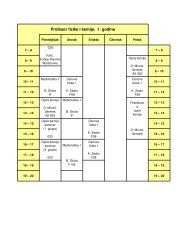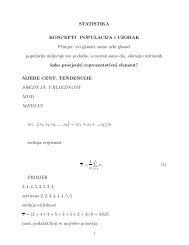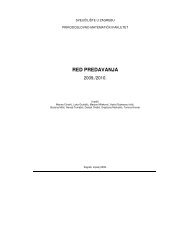RiskMetrics⢠âTechnical Document
RiskMetrics⢠âTechnical Document
RiskMetrics⢠âTechnical Document
You also want an ePaper? Increase the reach of your titles
YUMPU automatically turns print PDFs into web optimized ePapers that Google loves.
52 Chapter 4. Statistical and probability foundations<br />
Chart 4.2 shows the simulated stationary time series based on 500 simulations.<br />
Chart 4.2<br />
Simulated stationary/mean-reverting time series<br />
Log price<br />
4<br />
3<br />
2<br />
1<br />
0<br />
-1<br />
-2<br />
-3<br />
-4<br />
1 91 181 271 361 451<br />
Time (t)<br />
Chart 4.2 shows how a stationary series fluctuates around its mean, which in this model is 0.02.<br />
Hence, stationary series are mean-reverting since, regardless of the fluctuations’ amplitudes, the<br />
series reverts to its mean.<br />
Unlike a mean-reverting time series, a nonstationary time series does not fluctuate around a fixed<br />
mean. For example, in Eq. [4.15] the mean and variance of the log price p t<br />
conditional on some<br />
original observed price, say , are given by the following expressions<br />
p 0<br />
[4.21]<br />
E 0<br />
[ p t<br />
p 0<br />
] = p 0<br />
+ µt (mean)<br />
V 0<br />
[ p t<br />
p 0<br />
] = σ 2 t (variance)<br />
where E 0 [ ] and V 0 [ ] are the expectation and variance operators taken at time 0. Eq. [4.21] shows<br />
that both the mean and variance of the log price are a function of time such that, as time t<br />
increases, so does p t ’s conditional mean and variance. The fact that its mean and variance change<br />
with time and “blow-up” as time increases is a characteristic of a nonstationary time series.<br />
To illustrate the properties of a nonstationary time series, we use the random walk model,<br />
Eq. [4.15], to simulate 500 data points. Specifically, we simulate a series based on the following<br />
model,<br />
[4.22]<br />
p t<br />
= 0.01 + p t – 1<br />
+ ε t<br />
ε t<br />
∼ IID N ( 0,<br />
1) , p 0<br />
= 0<br />
RiskMetrics —Technical <strong>Document</strong><br />
Fourth Edition


